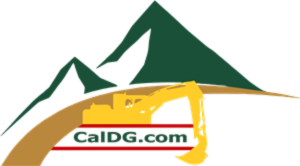


Bocce Court Oyster Flour
PRODUCT DESCRIPTION
Engineered for precision play, Bocce Court Flour offers a fine, consistent texture that compacts smoothly for true ball roll and minimal maintenance. Designed to resist erosion and hold grade over time, it ensures a professional-quality playing surface.
COLOR
Natural off-white to pale beige tones with subtle mineral variation; deepens slightly when dampened for a clean, polished court look.
GEOLOGY
Crushed oyster shell and granitic fines blend for optimal compaction and smoothness.
PRODUCT USES
-
Top dressing for bocce court surfaces
-
Surface finish for competition-grade bocce courts
-
Blended with base material for enhanced firmness
-
Drainable sport-court surface material
-
Grade refinement and top-layer finishing
COMPLETE YOUR BOCCE COURT:
Tons vs. Yards and Square Feet.
In most cases we charge by the ton and we have the receipts from the scale house at the quarry to show upon request. Materials sold by the yard tend to have very in-accurate amounts in the trucks.
Amounts depend the size of the loader bucket, how well the material was scooped up and who was supervising the loading of the truck. Scale House totals don't lie, so why take a chance on losing money and time with how many square feet, scoops, skips and or dumps were made in loading the truck?
Architects, public agencies, contractors and owner-builders requiring a competitive bid for the materials and transport costs should E-mail us with material specifications, amount and date needed and buyers contact information.
Decomposed granite, crushed rock, gravel, sand and similar materials are typically hauled in.
Truck n Transfers - 24 to 26.5 tons,
End-dumps - 18 to 24 tons
Super-10's from 10 to 17 tons
Flatbed trailers - 8 to 24 tons in SuperEarth-sacks
LTL FedEx, UPS, Central Freight and similar trucks - 1 to 8 tons in SuperEarth-sacks
1. What is decomposed granite and how is it different from regular gravel?
Decomposed granite (DG) is a natural material formed from the weathering of granite rock. It breaks down into fine particles that resemble sand but are slightly coarser. Unlike regular gravel, DG creates a smoother, more compact surface that’s ideal for pathways, patios, and garden areas.
2. How much does decomposed granite cost per ton or per yard?
The price of decomposed granite typically ranges from $50 to $75 per ton or $35 to $55 per cubic yard, depending on the color, quality, and delivery distance. Stabilized or resin-bound DG costs more due to the added binding agents.
3. What are the pros and cons of using decomposed granite for landscaping?
Pros: Natural appearance, good drainage, low maintenance, and eco-friendly.
Cons: Can be dusty in dry climates, may shift over time if not compacted, and needs occasional top-up.
4. How do you install decomposed granite for driveways or pathways?
To install DG, remove the topsoil, level the surface, and add a 2–3 inch base layer of crushed stone for stability. Then spread decomposed granite evenly, wet it, and compact it firmly using a plate compactor. For driveways or high-traffic areas, stabilized DG is recommended.
5. Does decomposed granite need to be compacted or sealed?
Yes. Compaction helps DG bind together and prevents erosion or shifting. Sealing is optional but recommended for areas exposed to rain or heavy use — it helps harden the surface and reduce dust.
6. What is stabilized decomposed granite, and when should I use it?
Stabilized DG is decomposed granite mixed with a binder that helps it stay firm and resistant to erosion. It’s ideal for driveways, patios, and high-traffic walkways where durability and minimal maintenance are important.
7. How long does decomposed granite last before it needs maintenance?
When properly installed and compacted, decomposed granite can last 7–10 years or longer. Light maintenance such as re-compacting and adding a thin top layer every few years helps maintain its appearance and firmness.
8. Can decomposed granite be used for bocce ball courts or patios?
Yes, decomposed granite is one of the most popular materials for bocce ball courts because it provides a smooth, firm, and permeable surface. It’s also excellent for patios due to its natural look and good drainage.
9. Is decomposed granite environmentally friendly and permeable?
Absolutely. DG is a natural and permeable material, allowing water to pass through easily and reducing runoff. It’s an eco-friendly alternative to concrete and asphalt, making it great for sustainable landscaping.
10. What color options are available for decomposed granite?
Decomposed granite comes in a variety of colors, including gold, tan, brown, gray, black, red, and rose. The color depends on the original granite source and adds a beautiful, natural tone to any landscape design.
Landscape & Hardscape Blog
Whether you’re creating a relaxing backyard retreat, designing a stunning front yard that stands out on your street, or enhancing your outdoor space with the natural beauty of California stone and decomposed granite, our blog offers expert tips and inspiration to make your project simple, beautiful, and built to last.
The Complete Guide to DG Stabilizers: DeGe™, GraniteCrete™, and TechniSoil™ G3
Decomposed granite (DG) looks beautiful and drains well but on high-traffic paths, patios, or bocce courts, loose fines can migrate,...
Choosing the Right Color of Decomposed Granite for California Landscapes
When it comes to landscaping in California, color is more than just aesthetics it’s about blending with the climate, architecture,...
Building the Perfect Bocce Ball Court with Decomposed Granite
If you’ve ever stepped onto a well-designed bocce ball court, you know there’s something special about the way it feels...


















